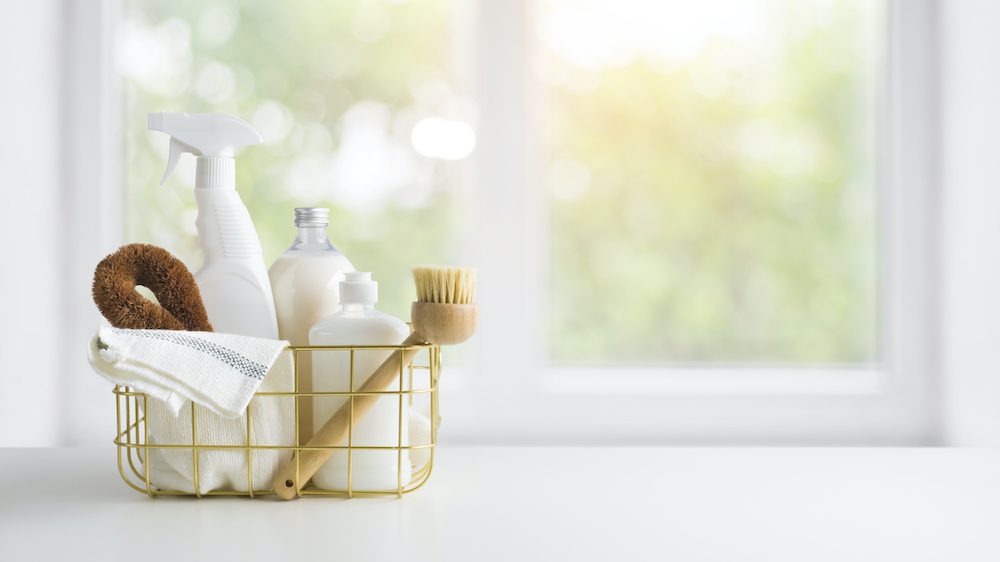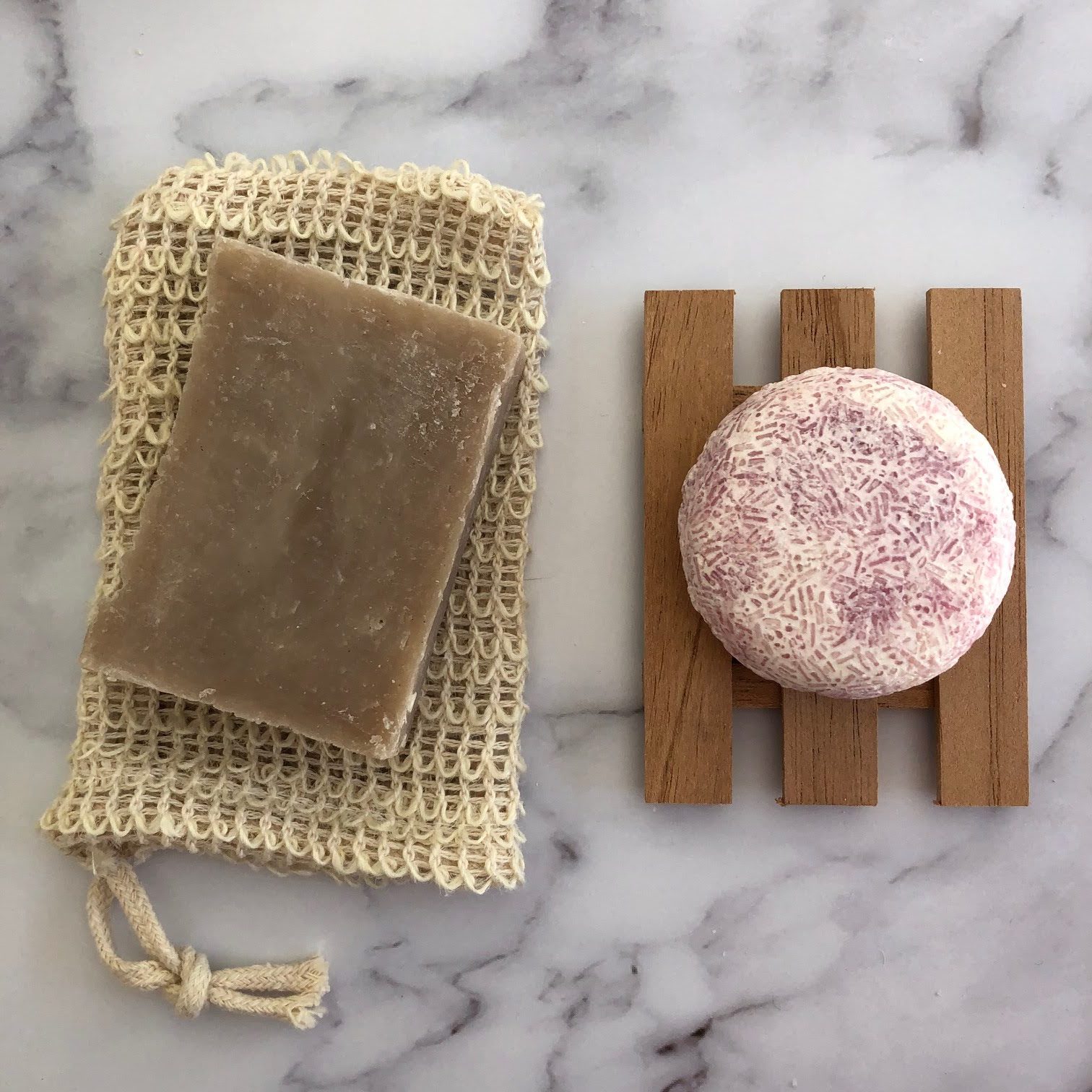
Getty Images
With renewed focus on the accelerating climate crisis, many people wonder what they can do individually to make a difference. The good news is that you can have an immediate impact by instituting small changes around the house.
“Living a sustainable life [starts by] taking care of your home and your community,” says Lori Myren-Manbeck, author of “You Can Save the World: In Fact, You’re the Only One Who Can…”
According to Myren-Manbeck, research suggests that 73% of consumers say that they would change their habits to reduce their impact on the environment, but that many get overwhelmed when trying to figure out the steps they should take to make a concrete difference.
With that in mind, here are some easy ways to shift your home instantly toward sustainability. Try just one (or all of them), and you can start being part of the solution, instead of the problem!
1. Cancel plastic from your bathroom
Many of the plastic products you use in your daily life probably start in your bathroom, and end up in a landfill or the ocean. Accordingly, this is a good place to look for ways of diminishing your output.
“Take a tour of your bathroom, noting all the disposable plastic containers you have,” says Myren-Manbeck. “Choose one item you will substitute so you no longer have the plastic.”
That doesn’t mean that you should just throw out the plastic product without finishing it (that’s where the pollution problem starts), but it does mean you should look for areas where you can replace items with options that aren’t plastic, once you’ve used them up.

Ultra Plus
Where to start? Myren-Manbeck suggests that glass containers are always better than plastic, so you could try making your own toothpaste, by mixing one part baking soda with one part coconut oil, and storing it in a glass container you already have.
Also, check out compostable floss in glass containers. Or switch out your plastic toothbrush for one made from bamboo. Plus Ultra offers a 100% natural, biodegradable, and compostable bamboo toothbrush.
The company says its products have saved the Earth from 1.5 million pounds of plastic waste in the 10 years it has been in business. It has also just introduced the first fully biodegradable electric-toothbrush replacement head—which is made of cornstarch.
Another place where you could look into alternative options is hair care.
“It is estimated that women use between 420 and 500 bottles of shampoo and conditioner over a lifetime,” says Myren-Manbeck.
These plastic bottles last for about 450 years in oceans, lakes, and rivers. Many shampoos and conditioners now come in refillable or returnable containers, but Myren-Manback also suggests that you check out zero-waste shampoo and conditioner bars, which were apparently all the rage in the 1940s, and which are regaining popularity as people try to live more sustainably.

Eco Girl Shop
2. Swap out paper products for cloth
The paper industry is one of the largest water polluters in the world, while deforestation is one of the main environmental problems leading to climate change. In fact, 42% of all wood harvested is used to make paper—this includes napkins, paper towels, and toilet paper—and paper accounts for 26% of total waste at landfills.
What’s the sustainable option here? It’s time to dress up your dinner table!
“Cloth napkins are easy to introduce and use,” says Myren-Manbeck. “They look good and work better than paper.”
If you have to use paper towels, go for recycled paper, which reduces water pollution by 35%. Meanwhile, if a cloth napkin is too run-down to reuse, repurpose it as a dish towel or cleaning rag.
3. Upcycle your recycling

Shadrack Musyoki
Reusing before you recycle is a great way to make your home immediately more sustainable. Why buy new containers to hold plants, or buy cleaning rags when you can make your own from castoff clothes?
Myren-Manbeck suggests it’s also easy to get your entire household involved in this one.
“For even more impact and fun, have each member of the family remove something from recycling and find a way to use it, whether to create a toy or a jewelry container,” she says.
Ideas might include reusing a coffee can to hold paint, refashioning large pickle jars to hold flour, sugar, or pasta, or artfully turning old clothes into pillow covers. Making just one substitution each week can steadily cut back on your carbon footprint, and become a fun creative activity, too.

Lori Myren-Manbeck
4. Reduce your laundry loads
Is your shirt really dirty? Or just sort of, but possibly “rewearable” dirty?
“Most clothes, with the exception of undergarments, can be worn many times before being washed,” says Myren-Manbeck. “Do the smell test. If your clothes do not smell, do not throw them in the wash.”
Before you say “Gross!” and skip this tip, hear us out: One clear perk of washing your clothes less frequently is that they last longer. What’s more, this will reduce your water consumption. Even high-efficiency washers use an average of 14 gallons of water per load.
Cutting down on the number of clothes you wash not only reduces your use of fossil fuels to run the washer and dryer, but also cuts back on your use of laundry soap. The soap typically comes in plastic containers and contains toxins that can find their way into your water system.

Lori Myren-Manbeck
You can refresh your clothes between washes by spot-cleaning when necessary, or giving them an “air bath” by hanging them out in the sunshine. This can kill some germs and give them a fresh smell.
When you are actually washing your clothes, consider line-drying them, since of all electrical appliances you own, your clothes dryer is the most expensive to run. Air-drying clothes can reduce a household’s yearly carbon footprint by over 1 ton per year.
A note about COVID-19 here, however. While evidence suggests that the virus cannot live long on textiles, as opposed to smooth surfaces, the Centers for Disease Control suggests that individuals like front-line workers, who are at high risk of coming into contact with COVID-19-positive individuals, should definitely wash their garments after each use.
5. Use eco-friendly cleaning supplies
Buying eco-friendly, plant-based cleaning products, or creating your own, is a great sustainable step.
“Look for cleaning supplies that do not contain harsh chemicals,” says Myren-Manbeck.
“A good rule of thumb is to not buy products unless you can read the ingredient list and understand what you are buying,” she says. “Or you can also make your own cleaning supplies.”
Again, this tip is complicated by COVID-19, since some products that generally clean well do not kill the coronavirus. For example, vinegar and baking soda, which are often used as DIY cleaning products, do not destroy the novel coronavirus and are not recommended.
Until we’re out of this pandemic, the goal remains to use the least dangerous and most environmentally friendly products you can, while reducing your possible exposure to the virus. The EPA has a list of cleaners that do kill COVID-19 that it considers safer choices.
The post 5 Easy, Earth-Friendly Ways To Create a More Eco-Conscious Home appeared first on Real Estate News & Insights | realtor.com®.
No comments:
Post a Comment